Astroneer Resource Graph
Used the trusty Graphviz to whip up a diagram showing how to get each of the resources in Astroneer. Click the WEBP thumbnail below to get the full glorious SVG, then you can 'find in page' on it. (Diagram source)
Used the trusty Graphviz to whip up a diagram showing how to get each of the resources in Astroneer. Click the WEBP thumbnail below to get the full glorious SVG, then you can 'find in page' on it. (Diagram source)
This blog now has a gallery of my drawings. A middle-aged outburst from the dying embers of my creativity has produced some devastatingly inept scrawls. I weep for having caused them to impinge upon your consciousness.
by Frictional Games, published 2015
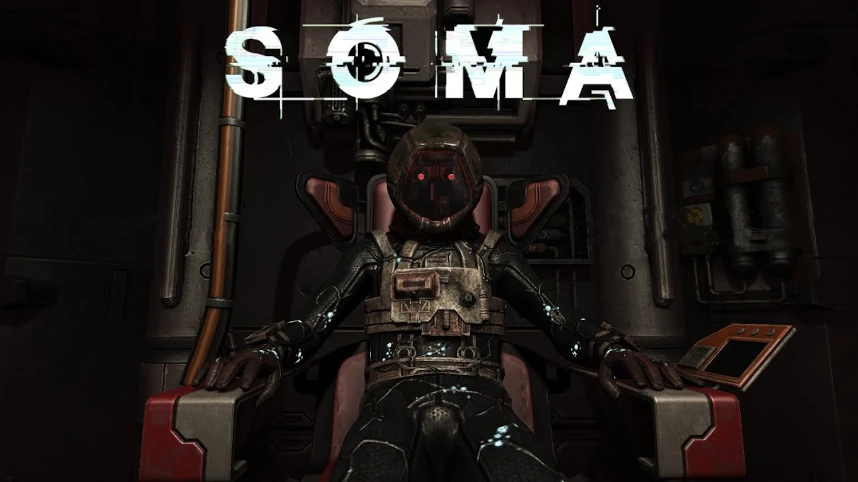
Soma is a creepy survival horror game, that leans deeply into the moral and existential quandaries arising from the deterministic principle that it's possible to scan one's brain and copy the structure into some other substrate, yielding a second conscious entity, which thinks it is you. So there are deep science-fiction issues in play here, about whether we think such a scheme could ever possibly work, and about the practical, personal, and societal ramifications of it.
Major spoilers ahead. It's seven years old at this point.
I loved the setup. A humdrum morning begins in your present-day Toronto apartment. A note on the fridge reminds you that today is the day of your medical appointment, a brain scan. Reaching the doctor's office by train, you find the experimental new type of brain scanner, run by some PhD in a cable-strewn side-office. Sit in the chair, don the helmet, wait for the scan to complete and- blink! Suddenly, you are elsewhere.
As the game progresses, it becomes obvious that the version of you that sat down in the seat did not experience this discontinuity. They completed the scan, removed the helmet, and continued their normal, everyday life.
You are not that copy. You open your eyes to a grim, decrepit cyberpunk future. Exploring, your only company is a menagerie of half-functional robots and drones, many of which are insane, and, in conversation, seem to be under the impression that they are human beings. It gradually becomes apparent that perceptual filters are in play, preventing them - and you - from noticing they are no longer human. At one point the ocean crashes in on you, and you drown for a little while, or at least think you are, but you still don't die. At that point you have to acknowledge the truth.
You have awoken to the year 2104, and the recorded brain scans of real humans are being used to animate drones. This is a scenario much like that told from a different perspective in the smashing short story Lena by qntm. Failing systems engaged fall-backs, resulting in your obsolete brain scan being yanked from storage to inhabit an advanced humanoid robot, in a facility deep under the ocean, some time after a comet strike has scoured all life from the planet's surface.
If that wasn't bad enough, one facilitating technology of this nightmarish scenario, a black goo that mimics and improves upon electrical and biological circuitry it comes into contact with, has run rampant, growing probing tendrils which are wrecking the facility. Among other effects, it has reanimated the corpses of the last few humans, who skulk around, not in a good way. As our protagonist asks, incredulously, "You mean they've been brought back to life?". Our reassuring AI companion replies "Yeah, let's call it that."
The game borrows the highly effective mechanics of Frictional's previous games, the Amnesia and Penumbra series, where the proximity of horrific, shambling enemies causes your character to experience debilitating symptoms, including, in this case, static-y visual distortions as your neural hardware suffers from some overload or interference. This applies even if you simply look at an enemy, an act which immediately draws their attention. So your only chance to survive encounters is to stay well out of sight, and actively avert your eyes so you can't even watch what's going on. Not being able to see exactly what your enemies are, or what they are up to, turns out to be fabulously scary and atmospheric. At one point it lead directly to my wife catching me staring intently at a blank, black screen for a prolonged period, with a peculiar expression on my face, as I hid in a dark cupboard waiting for the slithering sounds behind me to go away.
Spurring us through this environment are not just threats to our immediate survival, but also the adoption of a project, to launch into space a solar-powered simulation, hosting all the last remaining brain scans of the now-defunct human race, known as the 'ARK'. This will allow the on-board sims to live a prolonged period of idyllic virtual existence, preserving at least some echo of what humanity was. Since the conceit of the game is that our character is a living and conscious entity that feels real emotion, the sims on the ARK are all presumably the same, so this seems like a worthwhile endeavor.
We are guided, motivated, and assisted by "Catherine", a simulated personality running on our hand-held omni-tool, based on the brain recording of an AI researcher, whose project during her lifetime was the ARK. Plugging her in to a wall or console socket lets her interface with our surroundings, activating power supplies and manipulating machinery. She leads us through a series of undersea facilities, linked by trains, submersibles, and the occasional disorienting trudge across the murky ocean floor, stirred up by ferocious currents and landslides, populated by organic-mechanical hybrid horrors that glide by in the darkness. I found these some of the absolute best, most atmospheric "walking simulator" moments I've experienced in a game.
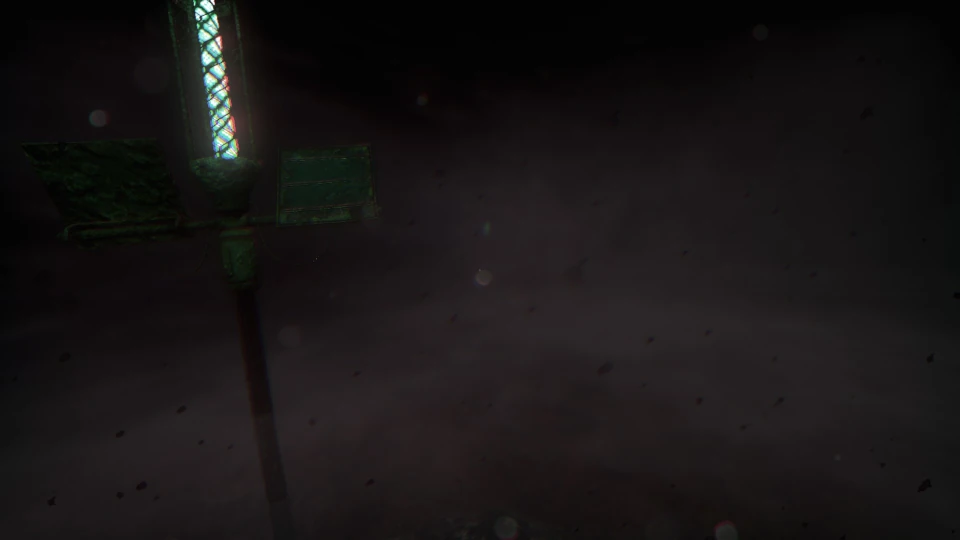
Along the way, we encounter a few unforgettable scenarios. We come across the failing storage system in which the last remaining copy of our own brain scan resides. I decide to flip some buttons which delete it, prompting my character to respond with something like "Let this be the last time I wake up in this godforsaken place."
At another point, we find ourselves trapped within a collapsing facility on the bottom of the ocean, with the gibbering undead hammering on the door from the next room. There is an airlock leading out into the ocean, but we would be crushed at this depth. There is no way out. Luckily, Catherine is able to guide us into assembling a more robust robot, one capable of withstanding the pressure - all we have to do is sit in the chair and activate the transfer into it. We already did this once, back in Toronto. Easy.
Except, after the transfer, we glance back across the lab at our original - the pictured chap with red LED eyes - who, we notice, is still breathing. Asking Catherine about it, she reminds us that the brain scan is not a destructive operation. He's still in there, chemically subdued for the moment, but he'll soon wake up again, wondering why the transfer didn't work. So we are left with the option of stomping out of the airlock to safety, leaving him behind to his nightmarish fate. Or flipping a switch to deactivate him before we go.
A lot of these narrative beats work better as a game than they perhaps might in a written story. They emphasize the player's complicity, your moral culpability, which is a mode that games, for all their faults, can do better than any other media. Plenty of the lesser moments along the way expose the player to decisions about unplugging some human simulation or other which declares itself to be "alive", but which is gating your progress in some way. Some of them are yourself. Some of these acts require manhandling weighty cables, which require large, insistent tugging with the mouse controls. It's not just a disembodied button press. One has to provide a determined, definitive, mechanical input to end a life. In context, the guilt feels real.
Later in the journey, we finally stumble across an honest-to-goodness real, live human being. She describes how the rest of the humans will be gathered in particular locations, while she stayed to protect the ARK. But, we tell her, we just passed through those locations, and there were no humans remaining there. We both know that the planet's surface is sterile. A beat passes before she announces "So I'm the last human being left alive." She's deathly sick, and without hope. By the end of your interactions she asks you to turn off her life-support before you leave, and stay with her for her last wheezing moments. So this is how humanity ends.
Carrying on, because what else is there to do? We finally we get the ARK loaded into the launch system that delivers it to orbit, upload our brain scans onto it just before it launches, and - we've done it! Success!
There was a moment, about five minutes before the end, when I realized what was going to happen here, even though my character had not. It was a real emotional blow. I envied and pitied him for his naive hope. For believing there was still a way out. For, of course, the ARK's launch changed nothing for us. Our simulations are aboard it, but we are still sitting here, in a broken robot corpse in a collapsing facility at the bottom of a haunted ocean on a dead planet. The dispatched copy will enjoy life on the ARK, but we - like the copy of ourselves we left behind earlier - are stuck here for good. Roll credits.
By Geoff Johns (writer), Gary Frank (pencil) & Brad Anderson (colors). (2017-2019)
Watchmen is a seminal 12-issue superhero comic by Alan Moore (writer) & Dave Gibbons (artist), published from 1986 to 1987, that transformed the comics world. A superhero tale in which all-but-one of the superheroes have no superhuman powers at all.
The decades since have spawned a number of remakes, sequels, prequels and spin-offs. Zach Snyder's movie adaptation has its adherents, although I am not among them - one of Moore's goals was always to explore what makes the comic medium unique, developing and advancing the boundaries of what you can do in a comic but cannot do in other media. For example, a reader absorbs a comic at their own pace, and will often voluntarily flip back to clarify overlooked aspects of recent panels. What use, then, a shot-for-shot remake in the medium of video, which steamrolls the viewer along, heedless of their desire to cross-check important details? The HBO miniseries sequel, on the other hand, was excellent - better than I imagined any Watchmen sequel could be. But other than that they have not been very good.
I initially thought the 12 issue sequel Doomsday Clock comic would fall solidly into this group - indeed, it was decried by many review headlines, so I passed it by when it came out a couple of years ago.
But on reading it last week, I really enjoyed it. It really swings for the fences, providing a smashing tale, with good arcs for both old and new characters, and a genuine attempt to advance the conversation that Watchmen started by deconstructing the superhero.
spoilers
We last saw Dr Manhattan at the end of Watchmen, having been isolated from humanity by Adrien Veidt's plans, tired of his entanglement in the messy complexity of people's lives, threatening to leave the galaxy "for one less complicated".
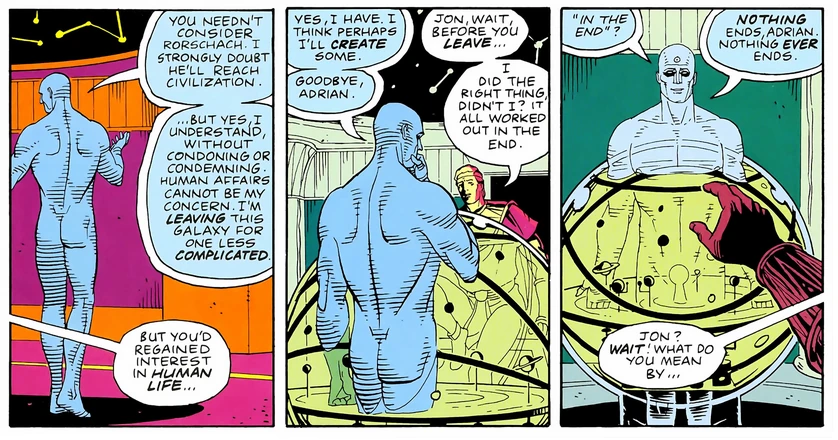
In Doomsday Clock, Adrian Veidt, genius that he is, invents a means to follow Dr Manhattan, seeking his help with the re-emergence of imminent nuclear war brought about by the revelations in Rorschach's journal, and it becomes clear that the "simpler place" Dr Manhattan has journeyed to is the DC universe, populated by Superman, Batman, and the whole stable of DC heroes.
Various other Watchmen characters make their way, or are transferred to, the DC universe. This has been described across the comic industry as "the crossover event nobody wanted", but personally I felt it was really well done.
Two of the most prominently deceased Watchmen characters are brought back into play, using mechanisms I thought were legitimate and, on occasion, laugh-out-loud satisfying as they reached their resolution.

In particular, they find a way to bring back Rorschach. Or, at least, a Rorschach. Another individual picks up the mask. This seems like the most controversial of the many decisions in the book, but it's handled deftly, and there are both similarities and differences between the old and the new Rorschach, making it an interesting character in its own right. In some ways this transformation is reminiscent of HBO Watchmen's treatment of Hooded Justice - retaining everything we already knew about the character, but performing an astonishing piece of narrative ju-jitsu to utterly transform everything about what that meant.
The DC heroes slowly realize their world is being altered by Dr Manhattan's manipulations, tying this crossover into the latest of the DC universe's "crisis" events, as Manhattan experiments with this reality, in order to understand it. In doing so, he uncovers deep truths that affect the inter-relationship between all the DC time-lines and universes, establishing that historical stories, such as Superman's original appearance in Action Comics of the 1930s, represent realities that still exist, out in the multiverse, unaffected by subsequent commercial re-ploughing that forever drives Superman's origin story further forward in time over the years. All these worlds, including the various DC pre-crisis worlds, are accessible to Manhattan's powers.
Incidentally, this enables DC to undo the changes wrought by the last few years' unpopular "New 52" era. This meant nothing to me when I started reading, I know basically nothing about American comics, only being familiar with the fabulous British 2000AD. I was spurred into reading around the DC lore, and by the time I was done, I understood that the New 52 reality included things like The Justice League's alternate roster, the early death of Clark's parents, which distances Superman from humanity and changes the character dramatically, the loss of the Justice Society of America from Earth, and the loss of Wally West's Flash. All these and more are written off as the effects of Dr Manhattan's meddling, isolated and preserved in just another spun-off part of the multiverse, while being jettisoned from the privileged metaverse, the core template from which all subsequent multiversal threads are forged, as it reverts to more-or-less its former state when Manhattan's changes are undone during Doomsday Clock's story.
In doing all this, Manhattan exhibits his usual clinical detachment from the human consequences of his actions, setting himself up as the villain of the piece, an uncaring "being of inaction", in contrast to Superman, the literal "man of Action".
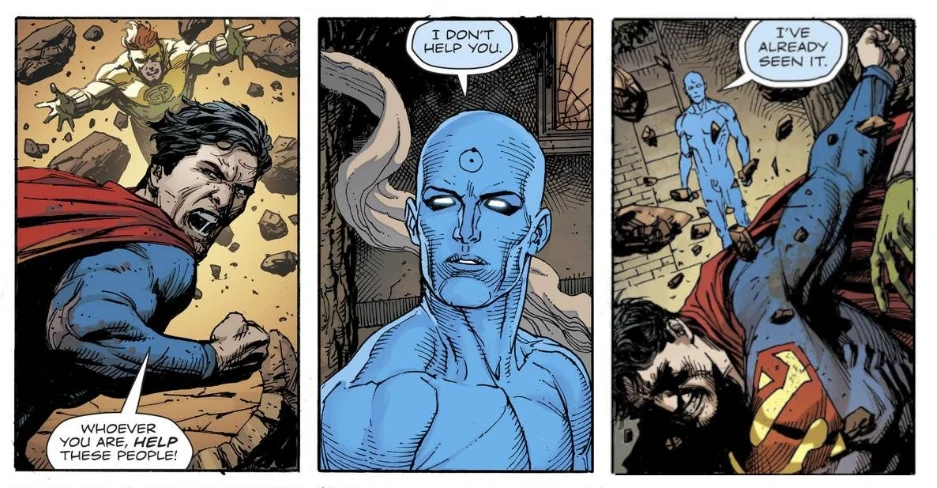
This forms a genuine riposte to Watchmen's criticism of the superhero genre. Yes, the DC heroes inhabit a simpler world, but the simplicity serves a purpose. Escaping the mundane enhances the mythological power of what they represent as symbols. Particularly the value of hope, as personified by Superman, which, although possibly somewhat overwrought in the telling - quite literally, in this tale - makes all other things possible.
I was especially pleased with the quiet, understated places Doomsday Clock goes with Mothman's, back-story. The character in Watchmen was only a punchline, a recurring throwaway reference to instability and alcoholism, telegraphing his subsequent mental breakdown. But here, we see him fully fleshed out.
Like the rest of the Watchmen heroes, he has no magical superhuman powers, but is still able to pull off entirely unexpected and superhuman-seeming stunts, merely by the virtue of his own unique kind of extreme mental and emotional resourcefulness. Flawed, but aware of his faults, and able to pull it together when he needs to, he befriends the younger Rorschach II during their overlapping stays in a mental institution, becoming a beacon of warmth, kindness, and generosity to the younger man.
He acts as a symbol, if you will, that just as Watchmen's ruthless gaze influenced the wider world of comics, so the comic world gazes back. They see us, all the real-world, fully-rounded humans, trapped in the depths of our pathos, and they wonder, when will each of us learn to transcend our humdrum limitations, to finally act on our hopes and dreams, and fly...


My employer, Canonical, has a "bring your own hardware" policy, trusting that their engineers would rather choose and administer their own personal laptops, rather than put up with standardized remotely administered corporate hardware.
My current much loved Thinkpad 460p has served faithfully since 2015, but is showing its age, sometimes struggling under the workload. Plus, its integrated graphics chipset doesn't have the power to play modern games with my kiddo. Battlezone 98 runs fine, but Civilization VI (2016) is annoyingly choppy, at about 9 frames per second.
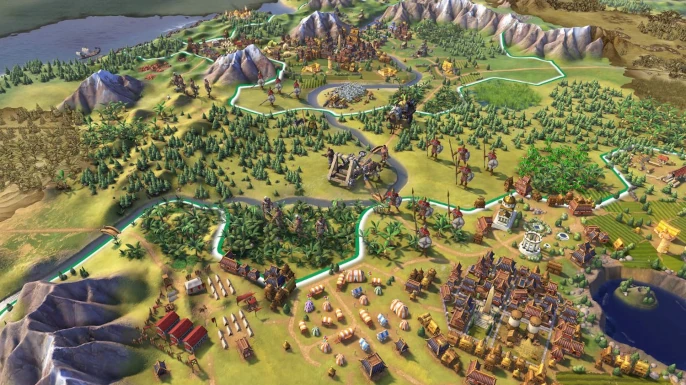
This summer I received the three-year cash-in-hand bonus earmarked as a "hardware refresh bonus". It's been many years since I've bought a laptop with the attention to detail that comes with spending one's own money. Even the current aging Thinkpad was a gift from a former employer. So it's been a decade or more since I've seriously specced out a new laptop. This post exists as a place to scribble down reminders of a few things I learned along the way.
I have a few constraints:
Reading around, I got sort-of up to speed on components.
The CPU buzz is around Intel's 12th generation (aka "Alder Lake"). These are
"hybrid" CPUs, combining large high performance cores with smaller high
efficiency cores on a single chip. They come in about 30 different variants,
with a naming convention that looks like, for example: Intel Core i7-12700H.
This consists of:
The major alternative to an Intel processor is AMD. These aren't the current season's darlings of the performance benchmarks, although they do include several respectable contenders that might be great for my needs, as you can see in the following performance comparison.
These laptop CPU performance benchmarks are culled from www.cpubenchmark.net, sorted by the benchmark score. I included the top 20, plus a handful of notable others that I looked up along the way. The 'bench' column measures relative performance under a variety of benchmark workloads which fully utilize all cores. The higher this number, the better.
The number of cores is given as (p)erformance + (e)fficiency, for hybrid processors.
| CPU | Cores | Clock | Cache | Bench | Price | Laptop models & other notes |
|---|---|---|---|---|---|---|
| i9-12900HX | 8p+8e | 5.0GHz | 30MB | 36 | $606 | |
| i7-12800HX | 8p+8e | 25MB | 35 | $457 | Thinkpad P16 ($2340). | |
| i9-12950HX | 8p+8e | 30MB | 34 | $590 | ||
| i7-12850HX | 8p+8e | 25MB | 31 | $428 | ||
| i9-12900HK | 6p+8e | 24MB | 30 | $635 | Dell XPS 15 ($2950). | |
| i9-12900H | 6p+8e | 24MB | 29 | $617 | ||
| i7-12700H | 6p+8e | 24MB | 27 | $457 | Dell XPS 17/15 ($2500), Acer Nitro 5, System76 Onyx & Gazelle. This CPU is what I ended up getting. |
|
| AMD Ryzen 9 6900HX | 8 | 25 | Fastest AMD processor. | |||
| i7-12650H | 6p+4e | 24MB | 25 | $457 | ||
| i5-12600HX | 25 | $284 | Fastest 12th gen i5. Suspiciously cheap. | |||
| AMD Ryzen 9 PRO 6950H | 24 | |||||
| i7-12800H | 6p+8e | 24MB | 24 | $457 | ||
| AMD Ryzen 7 PRO 6850H | 8 | 24 | Thinkpad P15v. | |||
| AMD Ryzen 9 6900HS | 24 | ASUS ROG Zephyr G14. | ||||
| AMD Ryzen 9 PRO 6950HS | 24 | |||||
| AMD Ryzen 7 PRO 6800H | 23 | |||||
| i9-11980HK | 2.6GHz | 23 | $583 | Fastest Intel 11th gen. | ||
| AMD Ryzen 7 6800HS CEd | 23 | |||||
| AMD Ryzen 9 5900HX | 23 | |||||
| i9-11950H | 8 | 2.6GHz | 24MB | 22 | $556 | |
| ... | (I skipped a bunch here) | |||||
| i7-1280P | 6p+8e | 4.8GHz | 24MB | 20 | $482 | Best Framework. |
| AMD Ryzen 7 5825U | 8 | 18 | Best Dell Inspiron 15". | |||
| i7-1260P | 4p+8e | 18MB | 17 | $438 | XPS 13 plus, X1 Carbon gen 10, Thinkpad P14. | |
| i7-1250U | 2p+8e | 12MB | 11 | $426 | ||
| i5-6200U | 2 | 2.8GHz | 3MB | 3 | My current Thinkpad T460. |
Notice my current Thinkpad's processor at the very bottom of this list, which is 10x slower than the CPU I ended up getting.
There are plenty of otherwise fantastic laptops which don't include blazing fast dedicated Nvidia or AMD graphics processors, but instead only come with relatively humdrum graphics support integrated with the CPU. Although integrated GPUs have improved massively in the last few years, this wouldn't be fast enough to run modern games well.
To compensate, I considered pairing such laptops with an external GPU enclosure (eGPU), into which a top-of-the-line desktop GPU card can be plugged. I'm still wistfully curious about this path, but in the end opted to do without this complication.
Here's a table of the top laptop GPUs, culled from gpu.userbenchmark.com. Unlike the CPU table, this isn't the top N performers, because GPUs can get crazy fast and expensive, so I'm looking for something middle-of-the-pack. It's just a selection of GPUs I looked up while researching particular laptop models.
The 'performance' column is the combined result of a variety of gaming benchmarks, the higher the better. The 'position' column compares the performance against all other benchmarked GPUs.
| GPU | Performance | Position | Laptop models & other notes |
|---|---|---|---|
| Nvidia GeForce RTX 3080 | 130 | 24th | System76 Onyx option. |
| Nvidia GeForce RTX 3070Ti | 122 | 27th | System76 Onyx option. |
| Nvidia GeForce RTX 3070 | 114 | 30th | |
| Nvidia GeForce RTX 3060 | 87 | 58th | Best XPS 17. System76 Gazelle. Acer Nitro 5. This is the GPU I ended up getting. |
| Nvidia GeForce RTX 3050Ti | XPS 15 option. | ||
| Nvidia GeForce RTX 3050 | XPS 15 option. | ||
| AMD Radeon RX 6800S | 85 | 58th | |
| AMD RX 6700M | 79 | 65th | |
| Nvidia RTX A1000 4GB GDDR6 | 45 | 114th | Thinkpad P16(certified) |
| Nvidia T1200 | 42 | 118th | Thinkpad P15v |
| Nvidia GTX 1050Ti | 30 | 144th | My current Windows gaming desktop. |
| Intel Iris Xe | 17 | 207th | Integrated. Framework. XPS 13 Plus. |
| Intel HD 520 | 4 | 402nd | Integrated. My current Thinkpad T460. |
Notice the two 'integrated' entries at the bottom of the table, one of which is my current laptop, a full 20x slower than the GPU I ended up getting. The improvement ought to speed Civilization VI up to around an entirely excessive 180 frames per second. \o/
With the above in mind, I read some reviews, and a few contenders emerged:
The Framework was massively tempting. It brings an entirely unprecedented - some might hopefully say revolutionary - focus on user-repair and upgradability. Rather than soldering and gluing the whole thing together, all the Framework's components, up to and including the motherboard and screen, are replaceable using a single screwdriver. This is deeply appealing for geeks, who want to be able to repair or upgrade.
The downside that gave me pause is it is only available with integrated Intel-powered graphics. If they had a model including the vastly superior Nvidia or AMD accelerated graphics, I would have just bought one months ago, instead of prevaricating. But that complication, coupled with the fact that the Framework's performance is only mid-range for a 2022 model, put me off sufficiently to look around at other options.
The Dell XPS 13 plus looks wonderful, with official Ubuntu verification, no less, but just isn't physically big enough for me, and is noticeably underpowered. And the Dell 15 inch models seem way overpriced, for the spec, easily exceeding my $2,000 budget.
The HP Dev One looks like a fabulous machine, a colleague just got one and is very happy with it. But again, it only has integrated graphics.
I considered this, repaved to run Ubuntu, of course, but to be honest, as exquisite as the hardware was at one point, it seems somewhat stagnant and directionless now, fifteen years later. Not unimpressive, but doesn't really grab me.
I looked at a whole bunch of other laptops at this point, scouring the "best gaming laptops of 2022" lists at Toms Hardware and elsewhere. Eventually my attention was drawn to System76, who, on reflection, should have been folks I checked out earlier in the process.
The Oryx is just a few hundred over my budget, even with the current $300 off. But a tricked-out Gazelle seems to check all the boxes.

They have a reasonably high-ranked 12th generation Intel i7 CPU, which seems to achieve good performance without wading into the diminishing returns of pricey i9 models. Same for the reasonably-placed Nvidia 3060 graphics. And the screen is just magic (judged by my admittedly idiosyncratic personal criteria.)
They support the lightning fast open source coreboot firmware, and System76 are a leading contributor to the project. They sell with Linux-pre-installed, and produce their own Ubuntu-based Linux distribution, Pop!_OS (Although stock Ubuntu runs just fine too.).
Going with Nvidia graphics instead of AMD does yield a performance boost, but the downside is that I'll have to wrestle with the opaque proprietary drivers from the famously uncooperative Nvidia. But in a nice gesture, System76 documents this process, and lots of other stuff, such as how to replace internal components yourself, on their website.
Because it's proprietary closed source, Nvidia drivers have always lagged behind AMD's open source offerings in terms of compatibility. In particular, Nvidia graphics hasn't worked with the new Linux Wayland display server. Reading around, my impression is that it's not ready yet, but might be by 22.10 (which is next month!?), so I could stick with the older XOrg display server for now, without fearing that I'll get marooned there.
There are other downsides. The keyboard is reputedly mediocre, and I wish it didn't have a numpad. Standard layout tenkeyless for the win, every time. But I almost always use a USB mechanical keyboard anyhow. Also, with such greedy components, the battery life kinda sucks when the GPU is on and the machine is busy. But in the last 12 months, the only time I've run my current laptop not plugged in is... never? So I guess I don't care.
So this is what I ordered, with the 15" display and the 3060 graphics.
But I did that thing where I order it with minimal RAM and SSD storage, to replace with my own parts. So I'll have some screwdriver work to do after it arrives. The payoff is that I save about $150 by paying market rates for these components. In fact I already have a tremendous SSD I can use, leftover from this year's Chia cryptocurrency farming experiments, so that part is free. This means I can stay within my $2,000 budget, with $9 to spare after shipping and taxes.
It's generally fine to just buy whatever RAM is recommended by your vendor. But the most reliable and cheapest memory will often be the slowest, or at least the one running at a clock speed which is most widely supported by different motherboards. In order to get the fastest memory for our particular laptop, we need to understand a few things.
The current standard for RAM is DDR4. For laptops, the slim physical form factor is known as SoDIMM. A single circuit board of memory chips is a module. A module connects into a motherboard slot.
DDR5 is supported by Intel's 12th generation processors, and AMD's newest Ryzen 7000 series. This uses a different physical connection on the motherboard, and is rare thus far, outside of systems above my budget.
So I'm looking for DDR4 in a SoDIMM module. Got it.
A module contains from one to eight 64-bit wide logical blocks of data storage (single, dual, quad or octal rank.) The chips on a module provide x1, x2, x4 or x8 banks.
number of chips x chip banks / 64 = module rank
eg. Using sixteen x4 chips will provide a single rank of memory on the module (16x4/64=1).
Whereas using 32 x8 chips will provide a module of 4 ranks (32x8/64=4).
This is sometimes annotated on the module using a notation like 1Rx4, as in one rank of x4 chips.
The reason this matters is that access to ranks is interleaved, so multiple ranks can provide access to data at multiples of the rate provided by a single rank. In order to take advantage of this, the motherboard must provide a commensurate number of memory access channels.
The datasheet for my Gazelle says the motherboard has two memory slots, and supports dual-channel access. This could be fully utilized by either inserting a single dual-rank module (which is more expensive), or, as in the timeworn heuristic, by inserting two half-sized single rank modules (e.g. two 16GB modules to make 32GB total.)
RAM has a clock frequency, measured in thousands of MHz, but "double data rate" chips transfer data on both the clock's rising and falling edges, so the speed of transfer is better measured in mega-transfers per second (MT/s), the higher the better.
However, it takes more than one clock cycle to perform an action. These latency values are sometimes quoted as a series of four integers - the number of clock cycles to perform particular operations, e.g. 18-18-18-43. But these are often abbreviated to just the first number, representing read access time, known as "CAS Latency" (CL), eg. CL 18, which tends to be representative. The lower this number is, the better.
The actual performance of the memory is determined by the product of a clock cycle duration (eg. 1ns at 1000MHz) and the latency number (e.g. 1ns * 18 = 18ns)
Further, the motherboard needs to support the RAM's clock speed. In practice, the motherboard will negotiate with the inserted modules to find a commonly supported frequency, the same or less than the minimum of the rated memory access frequencies of the module, the motherboard, and the CPU, using an over-complicated and hard-to-predict process controlled by BIOS settings. I have no experience with this but it sounds well worth avoiding altogether by making sure we get modules with a rated frequency that exactly matches the advertised clock frequency of our motherboard.
For my new Gazelle, the manual says that is 3,200MHz.
Finding CL26 latency RAM at 3,200MHz is easy, for around $70. For lower latencies the price goes up to about $375 for CL16, but that isn't even in stock anywhere.
At one point, after much searching, I found some CL16 on newegg.com:

And it is only $128! Carefully checking the specs, including those on the manufacturer's site, using the shown model number 'CMSX32GX4M2A3000C16', this is exactly what we want. 2x16GB at 3200MT/s at CL16.
While checking it out, I clicked around a bit, and at one point found:

This came along with a number of other negative reviews, stating customers had been sent memory modules that were fake, ie. imitations of the purported reputable manufacturer, they didn't work at the advertised clock speeds, and the seller had gone dark on them, taking weeks to respond to queries, and not sending replacements until Newegg got involved. Seems wisest to skip this.
Eventually I found an alternative:

Yes! DDR4 in a SoDIMM package, 2x16GB modules at 3,200MHz and 18CL. The latency isn't quite as good, but it sounds legit, so I'll take it!
And with that, I'm done. Now just awaiting the deliveries to arrive...
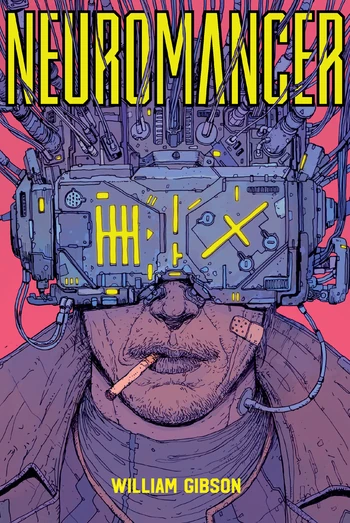
by William Gibson, 1984.
The sky above the port was the color of television, tuned to a dead channel.
So opens William Gibson's debut novel, and it is to his eternal credit that we all still remember the line now, nearly forty years later. I don't usually do audiobooks, but I made an exception for this.
The bartender’s smile widened. His ugliness was the stuff of legend. In an age of affordable beauty, there was something heraldic about his lack of it.
Unlike the majority of the beloved science fiction of my youth, Gibson's poetic, literary style has only increased in my estimation over the subsequent decades.
Cyberspace. A consensual hallucination experienced daily by billions of legitimate operators, in every nation. By children, being taught mathematical concepts. A graphic representation of data abstracted from the banks of every computer in the human system. Unthinkable complexity. Lines of light ranged in the nonspace of the mind, clusters and constellations of data. Like city lights, receding.
The consensual hallucination might seem prosaic now, but one has to remember this was written back when the internet connected less than 1,000 hosts, accessed via green screen text terminals on university campuses.
He'd made the classic mistake, the one he'd sworn he'd never make. He stole from his employers. [...] Of course he was welcome, they told him, welcome to the money. And he was going to need it. Because — still smiling — they were going to make sure he never worked again. They damaged his nervous system with a wartime Russian mycotoxin. Strapped to a bed in a Memphis hotel, his talent burning out micron by micron, he hallucinated for thirty hours. The damage was minute, subtle, and utterly effective. For Case, who lived for the bodiless exultation of cyberspace, it was the Fall. In the bars he'd frequented as a cowboy hotshot, the elite stance involved a certain relaxed contempt for the flesh. The body was meat. Case fell into the prison of his own flesh.
He introduced the world to cyberpunk, combining the fatalistic noire of Blade Runner with the relentless dehumanizing advances of a libertarian tech dystopia, to create a startlingly original warning of our possible future that looks, as the decades tumble by, increasingly on-the-nose.
A year here and he still dreamed of cyberspace, hope fading nightly. All the speed he took, all the turns he'd taken and the corners he cut in Night City, and he'd still see the matrix in his dreams, bright lattices of logic unfolding across that colourless void... The Sprawl was a long, strange way home now over the Pacific, and he was no console man, no cyberspace cowboy. Just another hustler, trying to make it through. But the dreams came on in the Japanese night like livewire voodoo, and he'd cry for it, cry in his sleep, and wake alone in the dark, curled in his capsule in some coffin hotel, hands clawed into the bedslab, temper foam bunched between his fingers, trying to reach the console that wasn't there.
There are several versions of Neuromancer as an audiobook. The slightly abridged six-hour version available for free at the Internet Archive is notable for two things: it is read by William Gibson himself, and it is an extremely low quality rip from an audiocassette.
Night City wasn’t there for its inhabitants, but as a deliberately unsupervised playground for technology itself. Like a deranged experiment in social Darwinism, designed by a bored researcher who kept one thumb permanently on the fast-forward button. Biz here was a constant subliminal hum, and death the accepted punishment for laziness, carelessness, lack of grace, failure to heed the demands of an intricate protocol.
The audio quality might make anyone immediately pass this version by. It isn't just noisy, but features discernible wow and flutter - artifacts characteristic of the stretching or uneven speed of its original tape based media.
He closed his eyes. Found the ridged face of the power stud. And in the bloodlit dark behind his eyes, silver phosphenes boiled in from the edge of space, hypnagogic images jerking past like a film compiled of random frames. Symbols, figures, faces, a blurred, fragmented mandala of visual information. Please, he prayed, now- A gray disk, the color of Chiba sky. Now- Disk beginning to rotate, faster, becoming a sphere of paler gray. Expanding- And flowed, flowered for him, fluid neon origami trick, the unfolding of distanceless home, his country, transparent 3D chessboard extending to infinity. Inner eye opening to the stepped scarlet pyramid of the Eastern Seaboard Fission Authority burning beyond the green cubes of Mitsubishi Bank of America, and high and very far away he saw the spiral arms of the military systems, forever beyond his reach. And somewhere he was laughing, in a white-painted loft, distant fingers caressing the deck, tears of release streaking his face.
But I'd urge you to stick with it. For the author's reedy, Virginia-inflected voice has a cadence that holds the attention. A rhythm of tone and emphasis that, for me, works considerably better than the practiced glossiness of more recent, more professional recordings.
"The moment, I mean the nanosecond, that one of those things starts figuring out ways to make itself smarter, Turing’ll wipe it. Nobody trusts those fuckers, you know that. Every AI ever built has an electromagnetic shotgun wired to its forehead."
By the end of the second chapter, I'd stopped being bothered by the audio quality, and by chapter three, it had become an intrinsic part of the experience.
It was disturbing to think of the Flatline as a construct, a hardwired ROM cassette replicating a dead man's skills, obsessions, kneejerk responses.
[...]
He slotted some ice, connected the construct, and jacked in. It was exactly the sensation of someone reading over his shoulder. He coughed.
"Dix? McCoy? That you man?' His throat was tight.
"Hey, bro," said a directionless voice.
"It's Case, man. Remember?"
"Miami, joeboy, quick study."
"What's the last thing you remember before I spoke to you, Dix?"
"Nothin'."
"Hang on." He disconnected the construct. The presence was gone. He reconnected it. "Dix? Who am I?"
"You got me hung, Jack. Who the fuck are you?"
"Remember being here, a second ago?"
"No."
"Know how a ROM personality matrix works?"
"Sure, bro, it's a firmware construct."
"So I jack it into the bank I'm using, I can give it sequential, real time memory?"
"Guess so," said the construct.
"Okay, Dix. You are a ROM construct. Got me?"
"If you say so," said the construct. "Who are you?"
"Case."
"Miami," said the voice, "joeboy, quick study."
"Right. And for starts, Dix, you and me, we're gonna sleaze over to London grid and access a little data. You game for that?"
"You gonna tell me I got a choice, boy?"
A distortion so thoroughly appropriate to the underlying material it was as though Gibson had planned it this way all along, speaking directly to me via a weak signal, projected through time by the noisy filters of this obsolete electro-mechanical recording mechanism. The words at once clear and irrevocably decayed, fuzzy sounding but still stark and unmistakable in their meaning.
"Dixie?"
"Yeah."
"You ever try to crack an AI?"
"Sure. I flatlined. First time. I was larkin', jacked up real high, out by Rio heavy commerce sector. Big biz, multinationals, Government of Brazil lit up like a Christmas tree. Just larkin' around, you know? And then I started picking up on this one cube, maybe three levels higher up. Jacked up there and made a pass."
"What did it look like, the visual?"
"White cube."
"How'd you know it was an AI?"
"How'd I know? Jesus. It was the densest ice I'd ever seen. So what else was it? The military down there don't have any thing like that. Anyway, I jacked out and told my computer to look it up."
"Yeah?"
"It was on the Turing Registry. AI. Frog company owned its Rio mainframe."
Case chewed his lower lip and gazed out across the plateaus of the Eastern Seaboard Fission Authority, into the infinite neuroelectronic void of the matrix. "Tessier-Ashpool, Dixie?"
"Tessier, yeah."
"And you went back?"
"Sure. I was crazy. Figured I'd try to cut it. Hit the first strata and that's all she wrote. My joeboy smelled the skin frying and pulled the trodes off me. Mean shit, that ice."
"And your EEG was flat."
"Well, that's the stuff of legend, ain't it?'
Five out of five stars. A riveting performance.
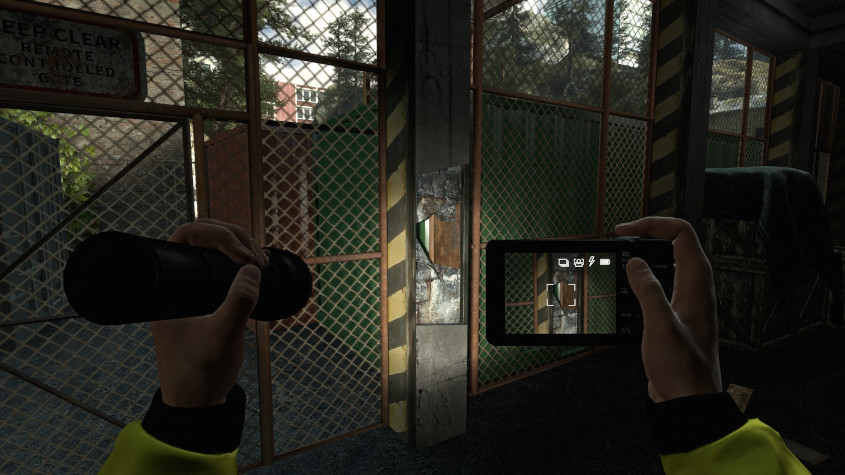
Released in 2016, played by me on Linux in 2022.
So much to love about this game. My enjoyment was perhaps stoked by my initial expectation that such a humdrum, non-mainstream game idea - of a civil engineer performing building inspections, documenting elements such as cracks and exposed rebar - must surely be a modest indie offering. But that expectation was vastly exceeded by the overwhelming generosity of the included content, providing level after level after level, all rich in geometry and atmosphere, navigable pathways surrounded by loads of non-essential scene setting, from broom cupboards to passing container ships, replete with specially coded set-pieces, and a story that expands in scope beyond all possible initial expectations.
It is filled with puzzles that are grounded in the atmospheric setting, having me clamber under cobweb-strewn desks with a flashlight, looking for tripped circuit breakers. The setting itself builds beautifully, starting with my inspection of bridges and decrepit sawmills as I wander along a small overgrown river path, but increasing in scope and severity as we continue downstream into town, culminating in varied and ambitious city facilities, from water treatment plants, abandoned sprawling secret WWI facilities, and various types of railway and power stations.
The puzzle difficulty is perfectly judged, demanding about the limit of effort I could bring to bear, and only on one or two occasions did I give up and find solutions online, leading overall to a tremendous sense of accomplishment.
The storyline exposes longstanding secretive corruption in the city, explaining both the pervasive neglect and sabotage that your inspections reveal, and it provides a variety of creative reasons why the buildings on your route are either long-abandoned, or else hastily evacuated moments before your arrival.
This gives you gloriously free reign over the facilities you pass through, opening up possibilities to perform ad-hoc repairs as you go. In particular, I particularly loved the way a successful navigation of levels like the water treatment plant requires the player to cross reference wall charts showing how the plant operates, with computer schematics showing the state of various machinery and valves, and overlay on top of that an understanding of a few signs and hand-written notes left behind by operators, to remind themselves about proper operating procedures, broken equipment, workarounds, and switches that were wired up backwards. And once you figure out this abstract understanding of what needs to be done, you have to map it all onto the actual 3D spatial layout of the massive hardware all around you, which often spans multiple buildings. Just delightful.
I should probably also mention the penultimate level, which is one of the most ambitious of many bold experiments that keep the levels diverse and surprising, by straying away from the core conceit. In this case that means navigating the locked-down hallways of an alternative, mushroom obsessed commune, squatting in a depressing tower block surrounded by trash. While this level is laudable for being the boldest of these experiments, and represents an important pillar of the narrative, an alternate society dropping out from the dysfunction induced in the city by the main story line. However, it didn't quite land for me, and I soon consulted an online walkthrough, without which I think I would have been trudging its grimy corridors for a long and dispiriting time. As it was, in contrast to the entire rest of the game, I was pleased to get it done as quickly as possible and move on without getting into its optional exploration and side-quests.
But other than that one level, I loved this game, and played it with a passion and obsession that burned fiercely for weeks.
I had to learn 100 questions and answers for my US Naturalization civics quiz this week, and my default way of learning something is to organize the information into an essay. Not the best work I've ever done, but it got me through the test, so good enough. Some of these assertions seem somewhat debatable, but my job here is to learn what the test tells me are the right answers. In some places I've elaborated around the edges with extra info that isn't on the test, but helps me to contextualize and remember.
The region now occupied by the US was originally settled by Native Americans, probably travelling from the Far East, around 15,000 years ago.
Modern Native tribes include Apache, Arawak, Blackfeet, Cherokee, Cheyenne, Chippewa, Choctaw, Creek, Crow, Hopi, Huron, Inuit, Iroquois, Lakota, Mohegan, Navajo, Oneida, Pueblo, Seminole, Shawnee, Sioux, and Teton.
European colonists came to America to escape persecution, in pursuit of religious and political freedom, and economic opportunity.
The Atlantic slave trade took Africans to the American colonies as slaves. This practice was widespread by the time of the American Revolution.
The colonists decided to fight for freedom from British rule because:
By the time of the declaration of independence, there were thirteen colonies that became the initial thirteen United States:
These States fought the American Revolutionary War against Great Britain.
In 1803 (27 years after the declaration of independence), the United States bought the Louisiana territory from France.
The Declaration of Independence declared the United States to be independent of, and free from, the rule of Great Britain. It was written by Thomas Jefferson, and adopted on July 4th, 1776.
It notes the right of all men to enjoy life, liberty and the pursuit of happiness.
The supreme law of the land is the constitution. It sets up and defines the government, and also enumerates the basic rights of American citizens and residents.
The idea of self-government is represented in the constitution's first three words: "We the people...".
The constitution was written at the constitutional convention of 1787, by the Founding Fathers. Its passage was supported by the Federalist Papers, written by James Madison, Alexander Hamilton, and John Jay, under the pseudonym "Publius", after Publius Valerius Poplicola, a Roman aristocrat who led the overthrow of the monarchy to found the Roman Republic in 509 BC.
Benjamin Franklin is known as:
George Washington is known as:
The original text of the constitution has since been modified by twenty-seven amendments, each of which is numbered, and takes the form of an addition to the existing text.
The first ten amendments are known as "the Bill of Rights".
The first amendment prohibits the government from infringing on the right of residents in the US to:
The final four items above are together known as "freedom of expression".
In addition, the constitution establishes:
US citizens are granted additional rights that do not apply to all residents, including:
And US citizens are additionally assigned responsibilities:
Voting in federal elections is thus established as both a right and a responsibility.
The pledge of allegiance declares loyalty to the US flag and the United States.
Ways for citizens to participate in their democracy include:
When becoming a naturalized US citizen, the oath of allegiance declares one will:
All men resident in the USA must register for selective service (a list from which draftees are chosen should the need arise) between the ages of 18 and 26.
The last day to submit federal income tax forms is April 15th.
The enfranchisement and disenfranchisement of different groups has been a moral and political issue throughout United States history.
The original constitution did not explicitly specify who was able to vote, and states demonstrated considerable diversity in whom they did or did not grant suffrage to. In particular, most states only granted the vote to white, male, property owners - about 6% of the population.
In the 1820s, attitudes and state laws shifted, to allow all white males to vote in most states, although some laws removing the poor's right to vote continued until the 20th century, and practices that disproportionately affect the poor's ability to vote continue today.
Several constitutional amendments successively modified who can vote, notably:
The following section was not part of the USCIS civics test. But I'm including it because it's clear that although the Declaration asserted "all men are created equal", subsequent laws and behavior has severely curtailed that assertion when it comes to issues such as being allowed to vote. So, who currently is, and is not, allowed to vote? Sometimes the best way to understand something is to trace its contours, by enumerating the exceptions.
Those who are currently legally denied the right to vote, for reasons that seem potentially reasonable:
The following people are also legally denied the vote, for reasons that I personally find unreasonable:
The above categories represent 28.8 million people, around 11 percent of the adult population, who currently have no legal right to vote for US government positions due to reasons I personally find controversial or wrong.
Susan B Anthony was a prominent activist for womens rights and civil rights.
Martin Luther King Jr. fought for civil rights, to try and provide equality for Americans of all races.
The United States has waged many wars, including:
56 official wars, mostly resulting in the genocide or internment of various indigenous Native American nations. Sometimes the United States was allied with or fighting against Great Britain, and sometimes on the soil of other foes such as the Ottoman Empire and Morocco, China, Mexico, Spanish Florida, the Philippines, Cuba, Puerto Rico, or Guam. Notable among these wars were:
The American Civil War of 1861 to 1865 was fought between the United States and the Confederacy of Southern States, over the issues of whether slavery was to remain legal in the Southern States, upon which many southern white livelihoods and businesses depended. This is sometimes framed as an academic disagreement about "States Rights" to self-government, but I personally find it hard to interpret that as anything other than a disingenuous fig leaf.
Abraham Lincoln lead the Northern states to victory in the Civil War, and is praised for saving or preserving the Union. He presided over the Emancipation Proclamation which ostensibly freed the slaves, although many still suffer from ongoing repercussions and outright racism even up to the present day.
31 official wars, some against outstanding Native American nations, others in diverse locations such as Cuba, Nicaragua, Haiti, Dominican Republic, Russia, Mongolia, Korea, Vietnam, Laos, Lebanon, Cambodia, Grenada, Libya, Iran & Persian Gulf, Panama, Iraq, Kuwait, Saudi Arabia, Israel, Somalia, Bosnia, Herzegovina, Croatia, Haiti, and Serbia.
Notable amongst these were:
During the Cold war, the main concern of the United States was, it says here, communism. I'd wonder whether 'mutually assured destruction' might be a contender, but that is not listed as a correct answer.
On 11th September 2001, terrorists attacked the United States by crashing commercial passenger airliners into the Pentagon in Virginia near Washington DC, and the twin towers of the World Trade Center, destroying them and killing nearly 3,000 people.
This atrocity was used as a pretext for the USA's subsequent wars in Afghanistan and Iraq, both of which ended disasterously. The USA has also engaged in 9 other wars thus far this century, including Libya, Somalia & Syria.
The constitution grants the federal government power to:
The states are granted power to provide:
The government defined by the constitution is divided into three branches:
The separation of powers between these three branches forms a system of checks and balances that prevents any one part of government from becoming too powerful.
The President leads the executive branch. They sign bills into law, and have veto power over new laws. They are the Commander in Chief of the military. Presidents are elected for four year terms, in a vote that takes place in November.
The President appoints a Cabinet of advisors. If the President cannot serve, succession falls to the Vice President, and then to the Speaker of the House.
Other cabinet-level positions include Attorney General, and Secretaries of Agriculture, Commerce, Defence, Education, Energy, Health and Human Services, Homeland Security, Housing and Urban Development, the Interior, Labor, State, Transportation, the Treasury, and Veterans Affairs.
The President is currently Joseph Robinette Biden Jr (Democratic).
The Vice President is currently Kamala Harris (Democratic).
The Speaker of the House is currently Nancy Pelosi (Democratic).
Congress makes federal laws. It comprises two parts:
The Senate comprises two senators from each state, yielding 100 total senators. Each senator represents the entirety of their state. Senators are elected for six year terms.
Each state is divided into a number of congressional districts, the number of which depends on the population of the state. Each district sends a single representative to the House, whose job is to represent the people of their specific district. Currently, this yields a total of 435 representatives. Representatives are elected for two year terms.
The courts review and explain laws, resolves disputes, and decides whether laws contravene the constitution.
The "rule of law" states that every individual, no matter how highly-placed, must obey the law, as must the government itself.
The highest court in the land is the Supreme Court, which comprises nine justices, lead by Chief Justice John Glover Roberts Jr.
The United States of America contains 335 million people, of whom around 261 million are adults. The regions of the country comprise:
Plus other territories:
For comparison, the least populated state, Wyoming, contains 581,000 people.
The Pacific Ocean is on the West Coast of the United States, while the Atlantic ocean is on the East Coast.
The two longest rivers within the United States are the Missouri and the Mississippi.
The Statue of Liberty is on Liberty Island, in New York Harbour, on the Hudson River near the south end of Manhattan in New York City.
States that border Canada are: Maine, New Hampshire, Vermont, New York, Pennsylvania, Ohio, Michigan, Minnesota, North Dakota, Montana, Idaho, Washington, and Alaska.
States that border Mexico are: California, Arizona, New Mexico, and Texas.
The flag has 50 stars to represent the 50 states, and 13 stripes to represent the initial 13 colonies.
The national anthem is The Star-Spangled Banner.
Independence Day is celebrated every July 4th. Other national holidays are:
The capital of Minnesota is St Paul.
The current Governor of Minnesota is Tim Waltz.
The current senators for Minnesota are:
The current representative for my district, the first congressional district of Minnesota, is Jim Hagadorn (Republican).
The economic system of the United States is a capitalist, free market economy.
The two major political parties in the US are the Democratic and Republican parties.

Released on PlayStation 3 by thatgamecompany in 2012. Played on Windows 10 in 2022.
The slow-paced opening scenes, alternately trudging up and then surfing down sunbaked desert dunes, failed to sustain Zander's interest, so I ended up playing through its short runtime by myself.
In some ways it's an indictment of videogame culture that ten years later it still feels so fresh and radical to pair players up with another internet rando, while giving them no means to communicate or interact other than helping each other out, either leading by example, or exchanging wordless shouts. It seems like a pretty limited repertoire at first. I'm half tempted to just wander off ahead, alone, into the endless desert.
Then, you realize that standing close enough together recharges each other's magical flying scarves. Suddenly, it's enough. You cling to each other for dear life through the howling storms, double back to rescue each other from prowling beasts, and then fly exuberantly above the sunlit clouds, forever curving back to seek each other's life-giving sustenance.
I don't know who the two internet randos were, with whom I shared the first and second halves of my journey. But in those minutes together, we lived a lifetime's worth.
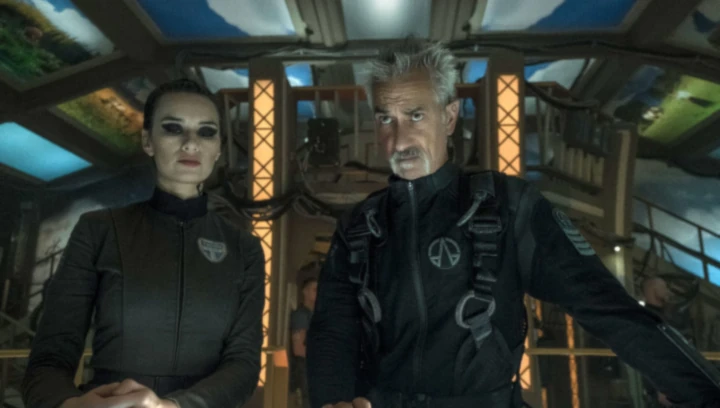
(This post rescues content from a Facebook comment I got carried away with recently.)
There's so much to write about the Expanse. It's such a relief to find a science fiction show with an ambitiously futuristic setting depicted in a way that doesn't make scientifically literate people cringe and shout at the television.
Also, it shines at taking the time for quiet moments of character work, from Miller's lonely, poignant realization in s01 that he wasn't the talented office maverick, just incompetent and unreliable, right up to the quiet, unseen payoff of Naomi's years-long efforts to save her son from his father's influence, in the final seconds of s06.
On many axes, it's the best SF on television, which is saying something, as there are so many competitors. Science fiction output is following some sort of Moore's law of endless expansion, in response to society's need for mythic stories of relevance to modern life, itself a symptom of the meaning crisis of modern society. But this is a mixed blessing, because the resulting shows & movies are often drawn to using the superficial trappings of science fiction, spaceships and lasers (pew pew!), while failing to fulfil the deeper psychological needs of mythical or symbolic significance that brought about their creation. The Expanse is perhaps the prime example of this.
My fantastic SF podcast guy defines SF as the arena in which we forge new myths of psychological meaning for modern life, which are sorely needed as traditional myths dwindle in relevance, as they are predominantly based on nature and superstition. Movements such as spiritual atheism are a reflection that even the least spiritual amongst us recognize that something is missing.
I do concede that defining SF in this way is a bit of a cheat. It's somewhat aggrandizing, claiming any great mythic work as actually being part of the SF genre, an no doubt is a somewhat defensive reaction to mainstream dismissal of science fiction as puerile. But it does provide a marvellous framework for discussion, and adopting this definition makes several previously puzzling things fall into place.
It settles the revealing, never-ending debates over which works are, and are not, science fiction. Somewhat tellingly, to me, such debates are irreconcilable precisely because of the misnomer "science fiction", which was never really about the science to begin with, as this style of fiction has existed long before science was the focus. It only gravitated towards using science as it became apparent that is now where society's power and transformation springs from - our incarnation of gods and magic - and the name "science fiction" was then applied post-facto, missing the underlying fact that this is just mythic fiction with some modern attributes.
This definition perfectly explains things like how the first half of the movie "Sunshine" could be such astonishing science-fiction, while the second half - set aboard the exact same spaceship - is just a mediocre slasher flick.
So. SF is the arena within which we construct new mythic narratives.
By this I mean that great science fiction tends to create a story that resonates because it leans on powerful mythic tropes - symbolic representations of psychological significance, character arcs mirroring Jungian archetypes, thematic elements that are told allegorically, suggesting things to the reader/watcher on a level that can be more powerful than merely stating them directly to the conscious mind.
In this way, all-time-great examples such as 2001: A Space Odyssey (the title being conscious of this mythic entanglement) leans heavily into themes such as humanity watched over by an ancient, mysterious, godlike alien influence which has literally created humanity in its present form, and observes as we now reach a second inflection point, materializing not just a tale of personal transcendence (although it is certainly that), but one of species-wide sublimation - suggesting that it is time for us all to reach spiritual adulthood, to graduate to whatever comes next, to meet and be transformed by the wise and powerful force that has shepherded humanity through our previous prehistorical transitions.
I could go on with similar examples, but will just briefly mention the original Matrix movie, which is a story which resonates because it is absolutely soaked in allegory of both religious transcendence and Jungian archetypes - which are so on-the-nose that it cannot possibly be accidental, a fact acknowledged directly by the creators in the sequels, when they depict the Architect, ultimate villain encountered at the narrative peak of the story, as a prim, middle aged, white bearded gentleman, wearing an Edwardian suit. He speaks in a precise, almost Germanic manner. This is, unmistakably, Sigmund Freud. Why is Freud the villain of the Matrix? Because Freud was a contemporaneous antagonist to Jung, resisting Jung's ideas of self actualization through reconciliation of the archetypes, just as the Architect resists Neo's progression along that same path.
It may be my own lack of imagination, but compared to examples like this, the Expanse starts to look a bit thin. I don't see any symbolism or allegory. There is some good character work but no actual arcs of transcendence. Through the unfortunate realities of converting books to screen, large chunks of what could have been the most meaningful story were simply abandoned and will apparently never be finished on the screen. In their stead, what would have been mythic elements become a series of "McGuffin of the week", as we never circle back to resolve why the protomolecule was created, why it was sent to our ancient solar system, why it turns people into nuclear-powered zombies, and what force destroyed the protomolecule creators, and why? And that's just series one's unresolved elements.
So, lacking that, what the Expanse has to offer is its superlative world-building and sane, believable depictions of a gritty interplanetary future. Which is no small feat - arguably nobody else has done it better. But, for me, it isn't enough. Maybe that's just because I'm a godless heathen who looks to get my spiritual fix through TV shows about spaceships. Or maybe it's because science fiction is where we show ourselves what we're capable of, what to aim for, and I believe we can aim higher than just exciting technological dystopias.